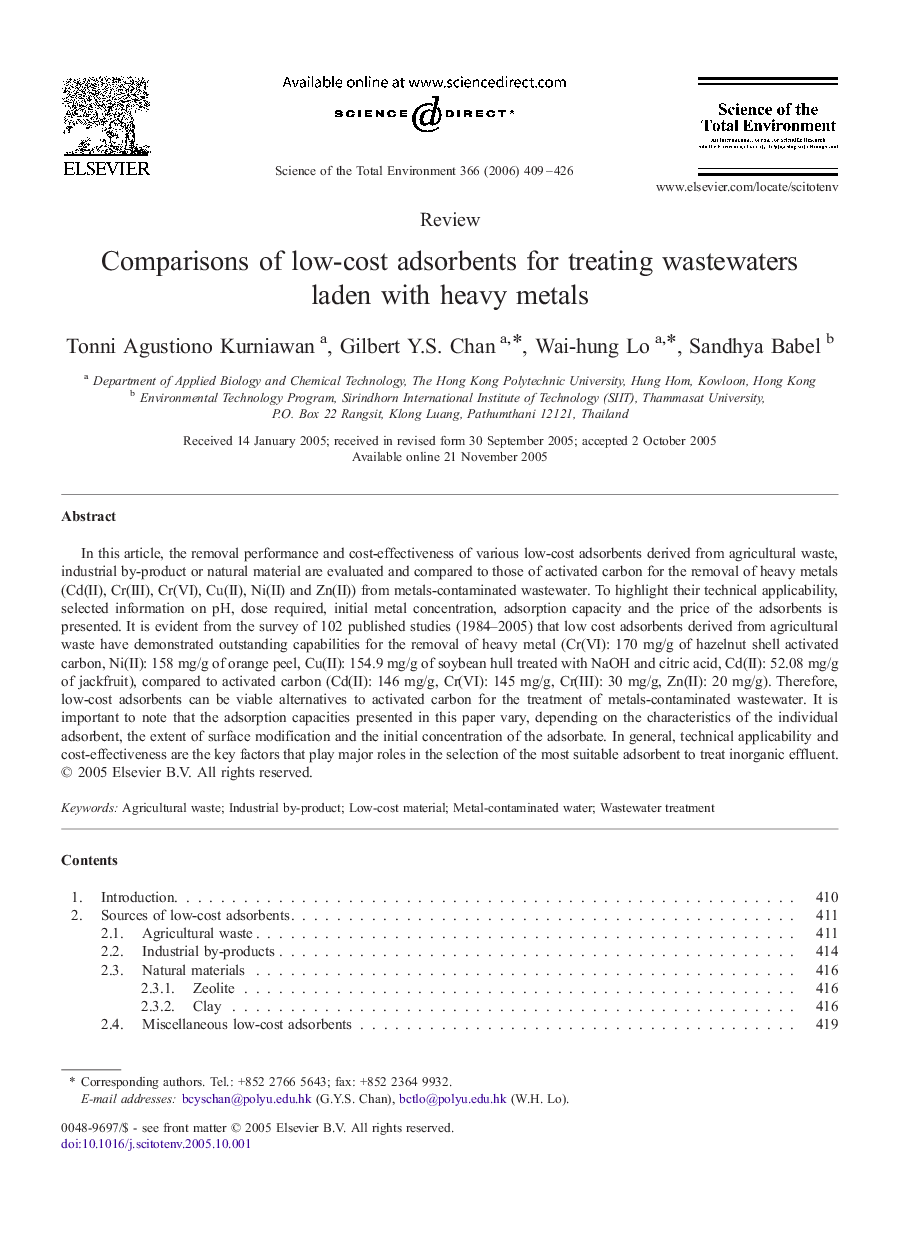| Article ID | Journal | Published Year | Pages | File Type |
|---|---|---|---|---|
| 4434101 | Science of The Total Environment | 2006 | 18 Pages |
In this article, the removal performance and cost-effectiveness of various low-cost adsorbents derived from agricultural waste, industrial by-product or natural material are evaluated and compared to those of activated carbon for the removal of heavy metals (Cd(II), Cr(III), Cr(VI), Cu(II), Ni(II) and Zn(II)) from metals-contaminated wastewater. To highlight their technical applicability, selected information on pH, dose required, initial metal concentration, adsorption capacity and the price of the adsorbents is presented. It is evident from the survey of 102 published studies (1984–2005) that low cost adsorbents derived from agricultural waste have demonstrated outstanding capabilities for the removal of heavy metal (Cr(VI): 170 mg/g of hazelnut shell activated carbon, Ni(II): 158 mg/g of orange peel, Cu(II): 154.9 mg/g of soybean hull treated with NaOH and citric acid, Cd(II): 52.08 mg/g of jackfruit), compared to activated carbon (Cd(II): 146 mg/g, Cr(VI): 145 mg/g, Cr(III): 30 mg/g, Zn(II): 20 mg/g). Therefore, low-cost adsorbents can be viable alternatives to activated carbon for the treatment of metals-contaminated wastewater. It is important to note that the adsorption capacities presented in this paper vary, depending on the characteristics of the individual adsorbent, the extent of surface modification and the initial concentration of the adsorbate. In general, technical applicability and cost-effectiveness are the key factors that play major roles in the selection of the most suitable adsorbent to treat inorganic effluent.
